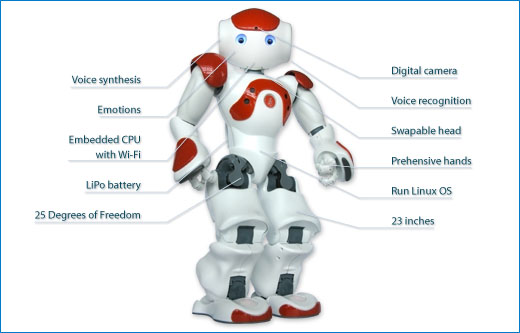Let’s face it: even when we take into account their potential for turning into Skynet, we love robots. We love creating them, we love upgrading them, and we love seeing just how far and just how many uses we can come up with for the technology, from handling complex tasks to just pure fun. Created by the Paris-based robotics company Aldebaran, Nao, a new robot for your toddler and developed with basic artificial intelligence technology, definitely toes that line between functionality and fun.
Built with language-learning software created by the voice-technology company Nuance, Aldebaran’s new robot is designed to develop it’s own personality, the more it speaks to its human companions. The little guy can walk, catch and turn itself when falling, and has the capacity to speak in 19 different languages.
According to Nuance’s vice president Arnd Weil, the robot’s capacity for learning is what sets it apart from other machines: It comes with built-in “emotional intelligence” that allows it to sense the mood of the people surrounding it and react.

Nao robot makes an adorable friend of your family
The robot’s technology allows it to build its own vocabulary and personality by accessing a cloud of data, which also helps it understand the flow of conversation. According to Weil, this allows the Nao companion robot to better learn how to interact with its users.
Eventually, the robot’s creators see their creation filling a variety of roles and functions, hopefully excluding trying to take over the world. The robot and others like it could bring out drinks, provide company for the elderly or the disabled, read your children their bedtime story or just provide a friendly ear to chat with while you wait on line at the bank or at your doctor’s office.
True, Aldebaran and Nuance’s little companion-bot is a far cry from Skynet. But the technology it uses, while employed for learning and friendly purposes, could eventually lead to future robots with more complex and more intelligent AI systems.
Maybe we should start searching for John Connor anyway. You can never be too careful about this kind of thing.
Story via Mashable
Advertisement
Learn more about Electronic Products Magazine





